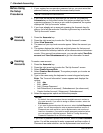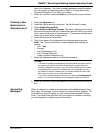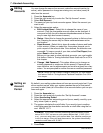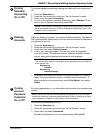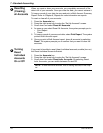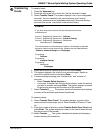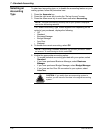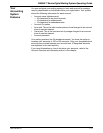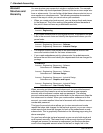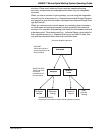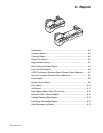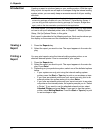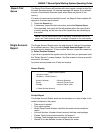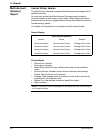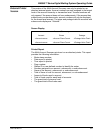
7 • Standard Accounting
7-12 SV61162 Rev. D
Account
Structure and
Hierarchy
You can structure your accounts in single or multiple levels. For example,
you can divide a top level department (account) into two or more major sec-
tions or subaccounts. You can further divide these subaccou
nts into two or
more sections or subsubaccounts. The following examples demonstrate
some of the ways in which you can structure your accounts.
• When you create a top level account, you can charge funds and pieces
to that accou
nt. This is the working (chargeable) account because at
this point it does not have any subordinate accounts:
• If you create subaccounts for the original account, they become the end
links in the accou
nt chain and identify the departments where you dis-
perse funds:
• The original Account now serves as an ad
ministrative account that
owns and contains totals for the lower subaccounts.
• If you create subsubaccounts for subaccounts, the subsubaccounts
become the end
links and identify the departments that are charged for
postage.
When accounts are linked (account/subaccount, or account/subaccount/
subsubaccount
) they become a set and are treated as one separate
account, with one account number and one password. The existing
account number and password are rolled down to the subaccount when the
first subaccount is created. When you create another subaccount to this
account, you create another linked set of accounts with a different account
number and password.
This type of account structure allows you to view accoun
ts and create
reports that show total charges for the top level account, or you can view or
create reports that show the charges for each of the subaccounts or sub-
subaccounts. This is graphically illustrated on the
following page using the
above examples.
You can have all single top level accounts or you can mix both single and
multi-layered account
s. The lowest level in the account structure is where
charges are incurred. An account or subaccount, just like the subsubac-
count is the chargeable account when it’s the last, or single, link in the
EXAMPLE:
Account - Engineering
EXAMPLE:
Acco
unt - Engineering, Subaccount - Soft
ware
Account - Engineering, Subaccount - Industrial De
sign
EXAMPLES:
Account - Engineering, Subaccount - Software,
Subsubaccount - Soft
ware Testing
Account - Engineering, Subaccount - Software,
Subsubaccount - Sof
t
ware Design
Account - Engineering, Subaccount - Indu
strial Design,
Subsubaccount - Graphics
and Layout
Account - Engineering, Subaccount - Indu
strial Design,
Subsubaccount - User Fr
iendly Testing



